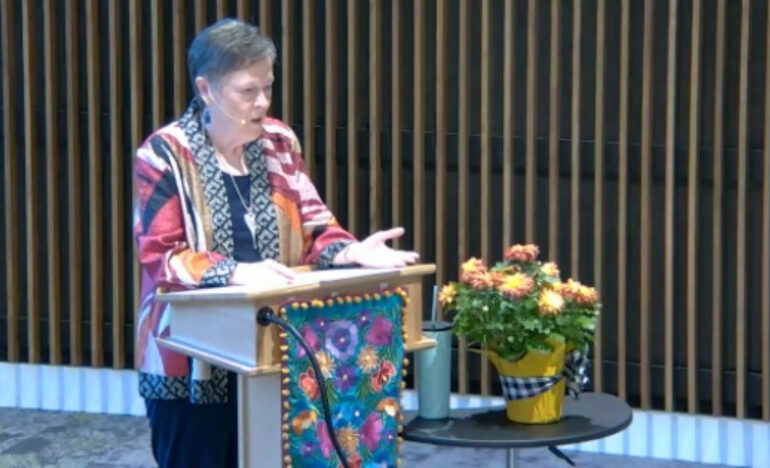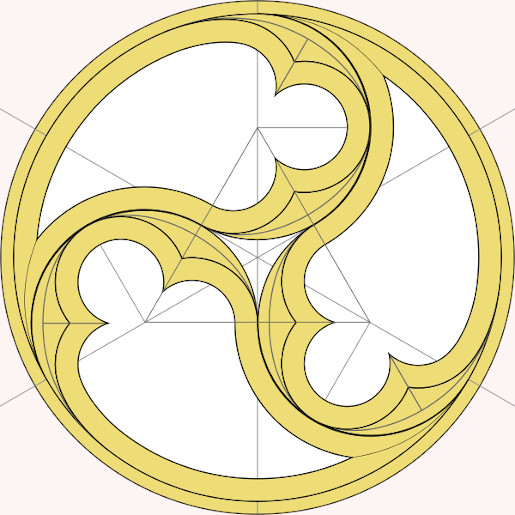Contemplation: Going Deeper into Silence

By Kathy Keary
This is Part 3 of a 4 Part series. Read all the articles here.
In this article, I am relying on the wisdom of David Frenette in his book, The Path of Centering Prayer: Deepening Your Experience of God as the concepts presented are quite lofty but awe-inspiring in my humble estimation.
In our last two articles, we explored the sacred symbols of the word, the breath, and the image. Over time our use of a sacred symbol will diminish. We will no longer rely on it to take us to a place deep within where we commune with the living God.
John of the Cross, the 16th century Spanish Carmelite friar and Catholic mystic, characterized the path of contemplation as nada, translated as “nothing.” Frenette elaborates:
John stresses that on the journey to union with Christ you hang onto nada, nothing — no spiritual experience, no gift, no consolation, no thought, no symbol, no form. After long practice of nada, of letting go of everything, you reach the summit of union with God, in which he says there is — guess what? — nada! Even union with Christ is colored by nothing.
In practicing centering prayer with sacred nothingness, you gently return to God’s formless presence when attachments to thought occurs instead of to the sacred symbol. God’s formless presence may feel like interior stillness, silence, or spaciousness. Frenette writes:
In the absence of attachment to thoughts, the inner faculties are deeply quiet, unmoving, and vast. You are awake to an aspect of the indwelling divine life — the Mind of Christ, God’s presence in pure awareness or the Heart of God — and are aware of it as interior silence, stillness, or spaciousness.
In contemplation, you participate in kenosis — Christ’s self-emptying. The practitioner lets go of the sense of self as separate from God, from others, and from all of creation. When you are unable to further let go, Christ lets go within you. Frenette describes:
Through your own and Christ’s deep self-emptying, God gradually comes to live in you as the subject of your prayer and, gradually your life … You begin to understand Paul’s statement “I live, not now I, but Christ lives in me” (Galatians 2:20) not as a description of an experience, but as a description of the way inner experiencing and consciousness are being restructured in you. When Jesus is not constrained as only an object of devotion, Christ is able to become the subject of your prayer and your life, in pure contemplation.

In pure contemplation, it is Christ’s prayer to the Father subtly coming to life within you. The everlasting and vast love that flows between the persons of the Trinity is known by the Greek word, perichoresis. In this movement, the Son is given completely to the Father. The Father is given completely to the Son. The Spirit is the gift of love between the Father and the Son and is the treasure that stems from the Trinity as the animating energy of the world.
“In pure contemplation,” Frenette states, “you realize your own human participation in the divine perichoresis, in God’s inner life, in Christ’s self-gifting to his Father, in the Spirit. As you deepen in contemplation, the image and likeness of God in which you are created (Genesis 1:27) suffuses your conscious life.”
Frenette points out that the words of Jesus, “Sit here while I pray…wait here and keep awake with me,” (Matthew 26:37-38) take on new meaning when viewed with the lens of contemplation. The practice of centering prayer is focused on waiting and being awake so that Christ can pray in the depths of our soul and in all things.
In pure contemplation, the interior silence, the interior stillness, and the interior spaciousness fall away from your consciousness and you are left with God alone. Silence, stillness and spaciousness may still be present but no longer as objects to be experienced. In the prayer of full union you lose awareness of union itself.
Thomas Keating describes full union as a form of non-consciousness:
This grace takes away all self-reflection. One is not even aware that one is in this state until it is over. Afterwards one knows that one has been in a spiritual place that was marvelous. Not only does the Spirit suspend the ordinary reflective faculties but even suspends the sense of an individual self…According to St. Teresa (of Avila), the Prayer of Full Union does not last long.
In centering prayer, you allow the sacred symbol to fall away. In pure contemplation, you allow the awareness of God to fall away. Frenette explains in his book that the practice of centering prayer facilitates the experience of pure contemplation. The experience of pure contemplation informs the practice of centering prayer. Centering prayer and pure contemplation are not the same but are quite similar. Each informs and complements the other.
In our next article, we will explore the effect that the practice of centering prayer and contemplation plays in everyday life.
Note: New articles in this series will be posted to the website every Monday and Wednesday. The full series can be found here: An Invitation to Something New: The Contemplative Life. On Thursday’s we’ll send an email to remind you of the articles
[Kathy Keary, a Precious Blood Companion and spiritual director, holds a master’s degree in theological studies and is a graduate of the Atchison Benedictine’s Sophia Center’s Souljourners Program, an intense study of spirituality and spiritual direction. Kathy believes that the divine is present and active in all of life and encourages others to be awakened to the God in all including the divine within. She enjoys accompanying others on their journey to wholeness discovering the person they were created to be.]
Image above © Tinnakorn Jorruang | Dreamstime.com
Related

Discover Lectio Divina
Presented by Kathy Keary
This is a recording of “Discover Lectio Divina” presented by Kathy Keary at Precious Blood Renewal Center in Liberty, Missouri, on Oct. 2, 2025.

Do You Hear What I Hear?
By Fr. Garry Richmeier, C.PP.S.
How can we avoid the harmful affects of the polarization that characterizes so much of our lives these days? One step toward this end is to cultivate a greater understanding and appreciation for the idea of relativity in human behavior.
Categories
Assembling God's Puzzle Coffee with Padre Cooking & Spirituality Encounters of the 4th Kind Family Matters Guided Meditations Reflections on the Eucharsitic Prayers Spiritual Resources Taize Prayers Teach Us to Pray The Contemplative Life Traveling with Pilgrims of Hope Uncategorized Videos Week of Prayer for Christian Unity When you need a little help


